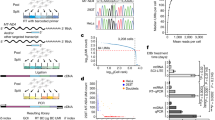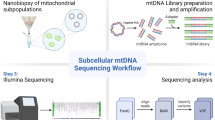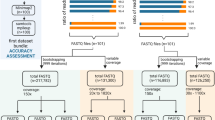Abstract
We have investigated the genetics of the length heteroplasmy associated with the T16189C variant of mitochondrial DNA (mtDNA), and report here definitive evidence that the pattern of the length heteroplasmy is not simply the outcome of drift related to the random segregation of the mtDNA population during cell division, but is actively maintained and regenerated de novo following each cell division. The pattern of the length heteroplasmy was maintained in a fibroblast cell line during an extensive mtDNA depletion experiment by ethidium bromide treatment, and following the subsequent repopulation of the cells with mtDNA. The investigation of the pattern of the length heteroplasmy by single cell pick up shows a similar pattern in sister cells despite the evidence of the randomness of mtDNA segregation, providing definitive evidence for the de novo regeneration of the pattern following cell division. Consistent with this conclusion is the observation that similar patterns of length heteroplasmy are found in tissues of single individuals.
Similar content being viewed by others
Log in or create a free account to read this content
Gain free access to this article, as well as selected content from this journal and more on nature.com
or
Author information
Authors and Affiliations
Additional information
Received: October 1, 2001 / Accepted: December 10, 2001
Rights and permissions
About this article
Cite this article
Malik, S., Sudoyo, H., Pramoonjago, P. et al. Evidence for the de novo regeneration of the pattern of the length heteroplasmy associated with the T16189C variant in the control (D-loop) region of mitochondrial DNA. J Hum Genet 47, 122–130 (2002). https://doi.org/10.1007/s100380200013
Issue date:
DOI: https://doi.org/10.1007/s100380200013
This article is cited by
-
Cisplatin selects short forms of the mitochondrial DNA OriB variant (16184–16193 poly-cytosine tract), which confer resistance to cisplatin
Scientific Reports (2017)
-
Sequenzierung aus einzelnen Epithelzellen
Rechtsmedizin (2010)
-
Single lymphocytes from two healthy individuals with mitochondrial point heteroplasmy are mainly homoplasmic
International Journal of Legal Medicine (2008)



